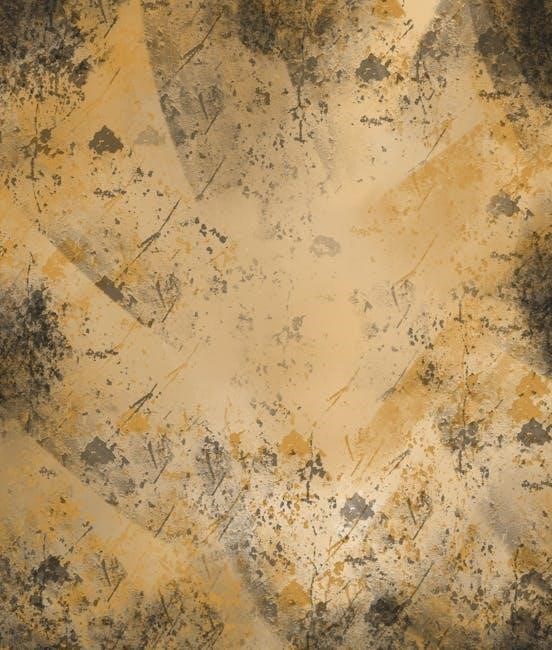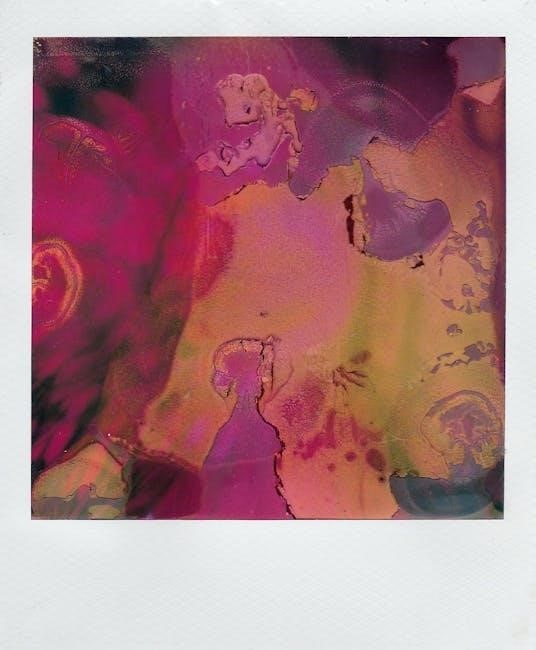CATIA Composites Design enables the creation of complex composite parts, combining advanced modeling tools with precise material definitions. This solution streamlines the transition from design to manufacturing, ensuring accuracy and efficiency in production processes.
Overview of CATIA V5 for Composite Design
CATIA V5 provides a comprehensive suite of tools for designing composite materials and structures. It offers advanced features like zone-based design, grid slicing, and solid slicing methods, enabling precise control over complex geometries. The software integrates seamlessly with manufacturing processes, ensuring designs are production-ready. Key capabilities include defining composite parameters, ply manipulation, and stacking sequence management. CATIA V5 also supports collaboration between engineering and manufacturing teams through detailed design documentation. Its user-friendly interface and powerful knowledgeware capabilities make it a preferred choice for industries requiring high-performance composite solutions. By leveraging CATIA V5, designers can efficiently transition from concept to production, maintaining accuracy and reducing errors. This makes it an essential tool for modern manufacturing, particularly in aerospace and automotive sectors where lightweight, durable materials are critical.
Importance of Composite Design in Modern Manufacturing
Composite design plays a pivotal role in modern manufacturing, enabling the creation of lightweight, durable, and high-performance materials. These materials are essential for industries like aerospace, automotive, and energy, where weight reduction and strength optimization are critical. Composite structures offer significant advantages over traditional metals, including improved corrosion resistance, reduced maintenance, and enhanced thermal properties. By leveraging advanced tools like CATIA V5, manufacturers can precisely design and analyze composite parts, ensuring they meet stringent performance requirements. The integration of composite design into manufacturing workflows also facilitates faster production cycles and reduces material waste. Additionally, composites contribute to environmental sustainability by enabling the creation of more fuel-efficient vehicles and renewable energy systems; As industries strive for innovation and efficiency, composite design has become a cornerstone of modern manufacturing strategies, driving technological advancements and cost reductions across multiple sectors.

Key Concepts in CATIA Composite Design
CATIA Composites Design revolves around defining composite parameters, understanding stacking sequences, and mastering ply manipulation. Key concepts include zone-based design and grid or solid slicing methods for precise part creation.
Defining Composite Parameters and Materials
Defining composite parameters and materials is a critical step in CATIA Composites Design. This involves specifying ply properties, such as thickness, angle, and material type, to ensure structural integrity. Engineers can import data from external files like Excel to streamline the process. The software allows for the creation of laminates with precise stacking sequences, which are essential for determining the mechanical behavior of the composite part. Material definitions include fiber and resin properties, enabling accurate simulations and analyses. These parameters form the foundation for subsequent design methods, such as zone-based or grid slicing approaches. By meticulously defining these elements, designers can optimize the composite structure for performance and manufacturability, ensuring alignment with engineering and production requirements. This step is fundamental for achieving the desired strength, weight, and durability in the final product.
Understanding Stacking Sequence and Ply Manipulation
Understanding stacking sequence and ply manipulation is essential for optimizing composite structures in CATIA. The stacking sequence refers to the order and orientation of individual plies within a laminate, directly influencing the part’s mechanical properties. CATIA allows designers to define and modify these sequences, ensuring compliance with structural requirements. Ply manipulation involves adjusting ply angles, thicknesses, and materials to achieve desired performance. This process is critical for minimizing weight while maintaining strength and stiffness. Engineers can import stacking sequences from external files, such as Excel, to streamline the design process. Accurate ply manipulation ensures that the composite material behaves as intended under various loads. This step is vital for achieving optimal results in both design and manufacturing, as it directly impacts the final product’s durability and efficiency.
Design Methods in CATIA Composites Design
CATIA Composites Design offers advanced methods like zone-based design, grid slicing, and solid slicing. These techniques enable precise control over composite structures, ensuring optimal material usage and performance.
Zone-Based Design Approach
The zone-based design approach in CATIA Composites Design allows for the creation of composite parts by dividing them into distinct zones. Each zone can be independently defined with specific material properties, stacking sequences, and ply orientations, enabling precise control over the composite structure. This method streamlines the design process by automating the generation of ply shapes within each zone, reducing manual intervention. It also supports the integration of external data, such as Excel files, for defining complex stacking sequences. The zone-based approach is particularly useful for large and intricate geometries, as it enhances collaboration between engineering and manufacturing teams. By organizing the design into manageable zones, it simplifies the transition from design to production, ensuring that the final composite part meets both structural and manufacturing requirements. This method is widely adopted in industries where precision and efficiency in composite material design are critical.
Grid and Solid Slicing Methods for Complex Geometries

CATIA Composites Design offers advanced tools like grid and solid slicing to handle intricate geometries efficiently. The grid slicing method divides complex shapes into a grid of cells, allowing precise control over ply placement and orientation within each cell. This ensures that the composite material aligns perfectly with the design intent. On the other hand, the solid slicing method simplifies the process by dividing the part into solid sections, making it easier to manage complex curves and angles. Both methods enable the creation of detailed design documentation, which is essential for manufacturing. These techniques enhance accuracy and reduce errors, especially in large-scale composite parts. By leveraging these methods, engineers can achieve optimal material distribution and structural integrity, ensuring the final product meets performance and safety standards. These tools are indispensable for industries requiring precise and efficient composite material design solutions.

From Design to Manufacturing
CATIA Composites Design ensures a smooth transition from design to production by generating precise documentation and enabling collaboration between engineering and manufacturing teams, streamlining the manufacturing process effectively.
Creating Design Documentation for Production
CATIA Composites Design facilitates the creation of detailed design documentation, essential for smooth production processes. Tools like zone-based design and ply manipulation enable precise modeling, ensuring accurate documentation. Features such as CAD format import and PDF documentation support collaboration and ensure all specifications are met. This streamlined approach helps bridge engineering and manufacturing, fostering efficient production workflows.
Ensuring Collaboration Between Engineering and Manufacturing Teams

CATIA Composites Design plays a vital role in fostering collaboration between engineering and manufacturing teams by providing tools that ensure seamless communication. The software offers features like zone-based design and ply manipulation, which help engineers create detailed models that are easily interpretable by manufacturing teams. Additionally, CATIA supports the creation of comprehensive design documentation, including CAD formats and PDF exports, which serve as a common language between the two departments. This documentation ensures that all specifications, such as stacking sequences and material properties, are clearly defined and accessible. Furthermore, CATIA’s integrated environment allows for real-time feedback and adjustments, reducing misunderstandings and errors. By bridging the gap between design and production, CATIA enables teams to work cohesively, leading to more efficient workflows and higher-quality composite products.




